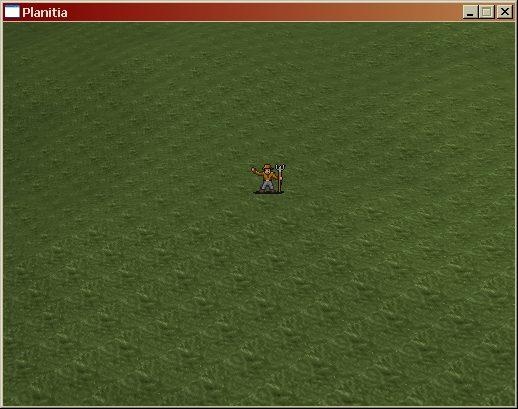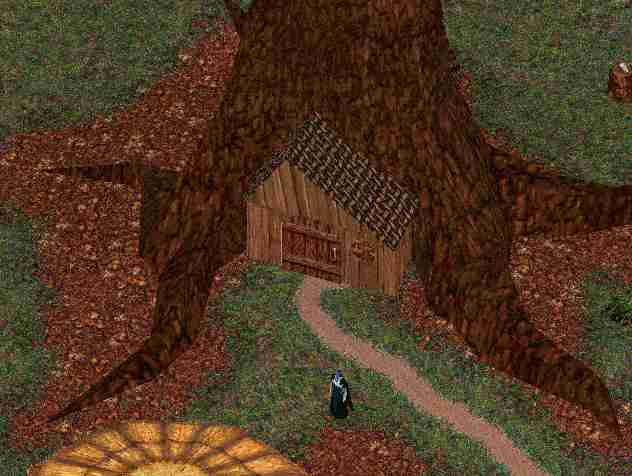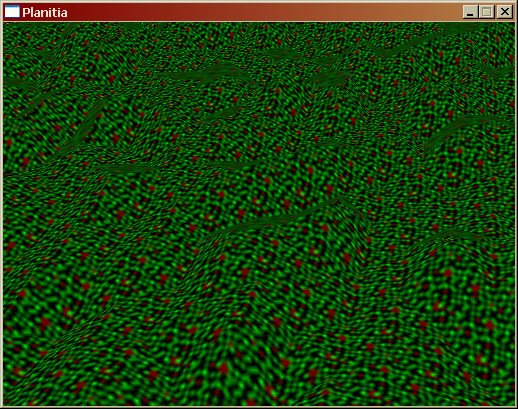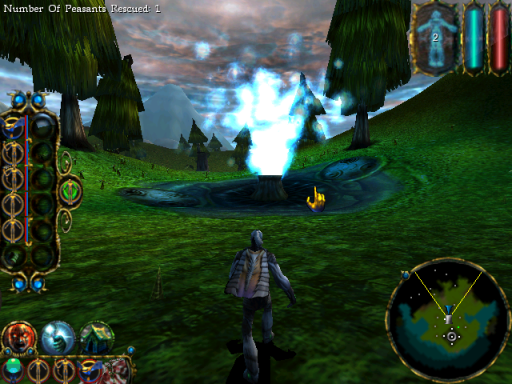
I’m using a better grass texture (although it still looks weird since that’s the only texture) and I’m now using a plasma I generated for my heightfield data. And I finally have units.
The unit is a simple billboarded quad. He moves autonomously across the terrain and his height is being constantly adjusted to match that of the terrain below him. I can’t pick him yet, but I can drop as many of them on the heightfield as I want…and now that I think about it, a horde of them would have made a much better-looking screenshot. Ah, well.
Next up, unit and terrain picking. Oooh, that’s going to be a pain. You may say, “Just grab some existing code!” and yeah, that would work, but the whole point of this is to understand all this stuff.
Once I get picking, I will probably go ahead and implement a very simple, fairly standard RTS using the classic three types (barbarian, warrior and archer) just so I can get the interface right.
Or I might just put in a god power or two. Picking a unit would make it possible to zap said unit with the lightning of Zeus! Which would be fun.



